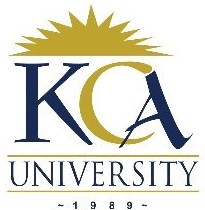
UNIVERSITY EXAMINATIONS 2017/2018
EXAMINATION FOR THE DEGREE OF BACHELOR OF
SCIENCE IN INFORMATION TECHNOLOGY/ BACHELOR OF
BUSINESS IN INFORMATION TECHNOLOGY
BIT2303 BBIT305 DISTRIBUTED SYSTEMS
FULL TIME/PART TIME/DISTANCE LEARNING
DATE: DECEMBER, 2017 TIME: 2 HOURS
INSTRUCTIONS: Answer Question One & ANY OTHER TWO questions.
QUESTION ONE: 30 MARKS (COMPULSORY)
a) Differentiate between the following:
i. Active and passive replication [2Marks]
ii. RPC and RMI. [2Marks]
iii. Transient fault and intermittent fault [2Marks]
iv. Tightly coupled systems and loosely coupled systems. [2Marks]
b) Discuss four drawbacks of distributed systems [4 Marks]
c) Briefly explain the mechanisms for implementing Remote IPC. [6Marks]
d) Discuss the services common to middleware models. [6Marks]
e) Describe using diagrams three algorithms for achieving mutual exclusion.
[6 Marks]
QUESTION TWO: 20 MARKS
a) Define the term file service [2 Marks]
b) Describe five benefits of file replication in a DFS. [5Marks]
c) Describe the file replication protocol [5 Marks]
d) Identify the file properties that influence fault tolerance. [5Marks]
e) Describe the following Distributed File Service requirements [3 Marks]
i. Concurrency
ii. Heterogeneity
iii. Efficiency
QUESTION THREE: 20 MARKS
a) Discuss four properties that a DS resource sharing mechanism must have in order
to provide concurrency transparency [6 Marks]
b) Discuss the following as used in distributed system
i. Association [1 Marks]
ii. Mobile code [1Marks]
iii. Mobile agent [1Marks]
c) Briefly explain three metrics of a scalable system. [6Marks]
d) Describe five issues in Concurrency and solutions to these concurrency problems.
[5 Marks]
QUESTION FOUR: 20 MARKS
a) Define the following concept used in synchronization [3 Marks]
i. Skew
ii. Clock drift
iii. Clock drift rate
b) Differentiate between internal and external synchronization [4 Marks]
c) Describe the Berkeley algorithm for achieving synchronization in clocks within
Distributed Systems highlighting its disadvantages. [6 Marks]
d) Explain why the Christian as well as Berkeley algorithms are adequate to
synchronize clock within a LAN and not a Adequate for synchronizing clocks in a
WAN. [3
Marks]
e) Differentiate between stateful and stateless servers highlighting how a stateless
model helps in server recovery after a failure. [4 Marks]
QUESTION FIVE: 20 MARKS
a) Differentiate between the NOS and DOS [4 Marks]
b) With the help a diagram illustrate what a message is discussing its structure
[6 Marks]
c) Discuss four distributed systems attacks [4 Marks]
d) Discuss any four security requirements in a Distributed System [4 Marks]
